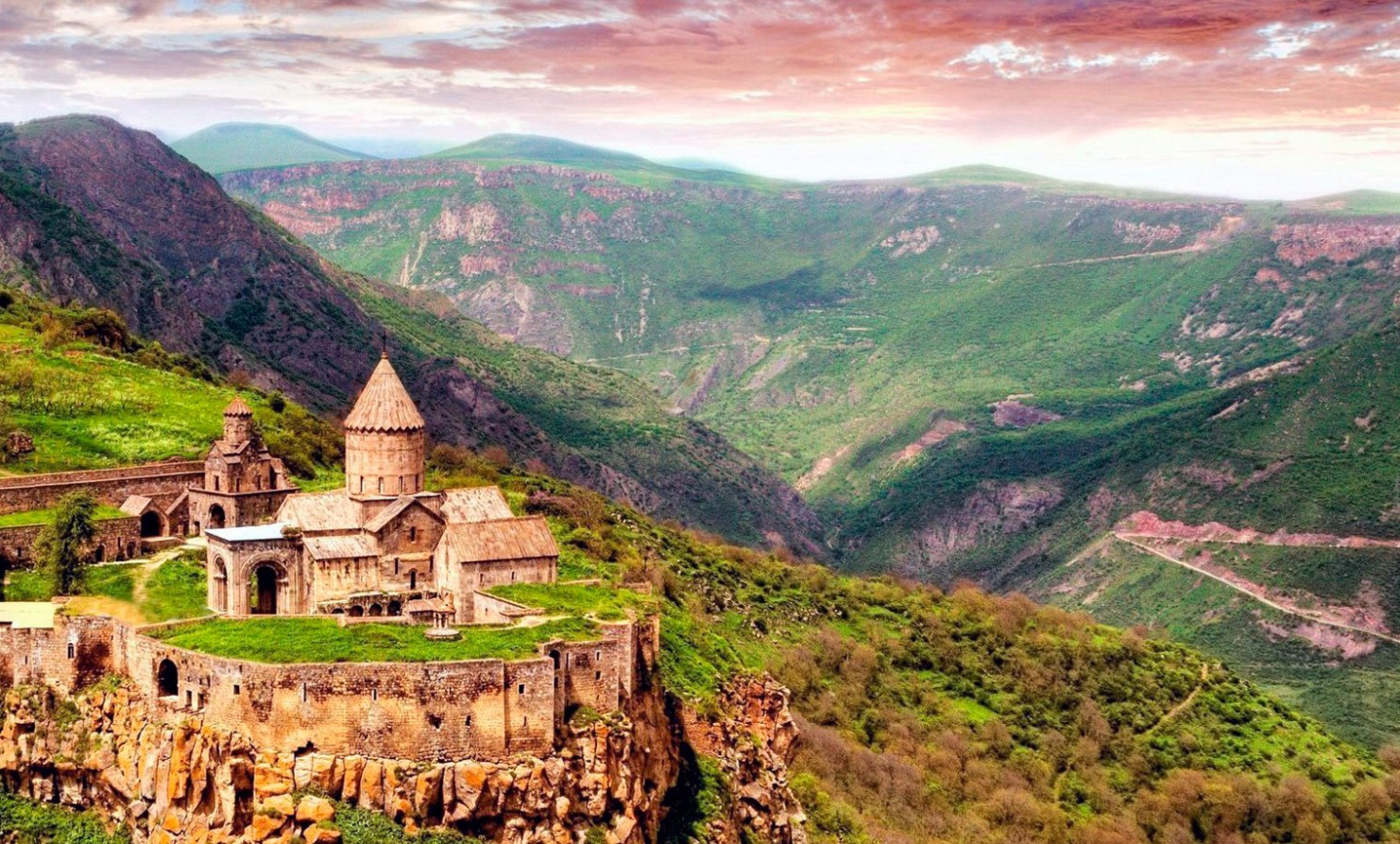Tourism in Armenia
Tourism in Armenia
Tourist places in Armenia
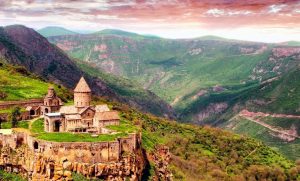
General information about Armenia
It is a landlocked mountainous country located in the Caucasus of Eurasia, where it is located at the meeting point of Western Asia and Eastern Europe.
It is bordered by Turkey on the west, Georgia on the north, the de facto republic of Nagorno-Karabakh and Azerbaijan in the east, while on the south it is bordered by Iran and the Nakhchivan enclave of Azerbaijan.
The climate of Armenia is remarkably continental. Summer is dry and sunny and lasts from June through mid-September. Temperatures range from 22-36 ° C (72-97 ° F). Winter sports enthusiasts enjoy skiing down the hills of Chakhkadzor, about thirty minutes outside Yerevan. Lake Sevan, which is located in the Armenian Highlands, is the second highest lake in the world, as it is located at an altitude of 1900 meters (6234 feet) above sea level.
Culture and history
Armenians have a special alphabet and language. The Armenian alphabet was invented in 405 AD by Saint Mesrop Mashdutus and consists of thirty-eight letters, two of which were added during the Cilician period. 96% of the country’s population speaks Armenian, while 75.8% speak Russian, and the popularity of the English language is also increasing with the present time.
Armenian music is a mixture of local folk music, which is perhaps best represented by Djivan Gasparian’s duduk music, as well as Christian pop and music.
Musical instruments such as the duduk, dahl, zurna and qanun are found in Armenian folk music. Artists such as Sayed Noa are also famous for their influence in the development of Armenian folk music. One of the oldest types of Armenian music is the Armenian chant, which is the most common type of religious music in Armenia. Many of these hymns are ancient in origin, and stretch back to pre-Christian times, while others are relatively recent, including many composed by Saint Mesrop Mashdutut, the inventor of the Armenian alphabet. Under Soviet rule, Armenian composer Aram Khachaturian became internationally famous for his compositions of Armenian classical music and various ballet works, including Saber dances (a saber type of sword) in the Gayana ballet.
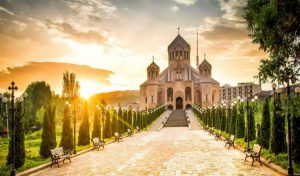
The National Museum of Art in Yerevan has more than 16,000 works dating back to the Middle Ages, which tell the rich tales and stories of Armenia of those times. It also includes paintings by many European artists. The Museum of Modern Art, the Child Portrait Gallery and the Martiros Saryan Museum are just names among the many museums and galleries in Yerevan. In addition, there are many private galleries, many of which open each year, including rotating exhibitions and sales houses.
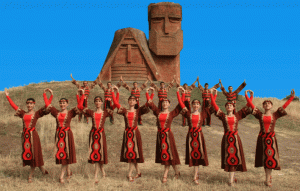
Tourist areas of Armenia
St. Gregory the Illuminator Cathedral
Also known as Yerevan Cathedral, it is currently the largest cathedral of the Armenian Apostolic Church in the world. It is located in the Kentron (Central Region) district of Yerevan, the capital of Armenia, and is considered one of the largest religious buildings in the South Caucasus along with the Holy Trinity Cathedral in Tbilisi (known as Samba Cathedral). It is located next to the public Andranik metro station, and can be seen from many angles in Yerevan.
Uriboon Castle
The ancient castle museum dating back nearly 3000 years, which proves the preserved Yerevan civilization in the Eriboni Castle in Armenia.
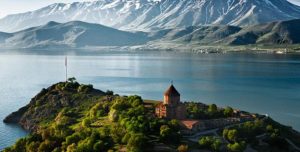
the blue Mosque
The mosque that dates back to the 18th century, is one of the few surviving (pre-Soviet secular) Islamic structures that bear witness to the flourishing of the Muslim community in Yerevan.
Lake Sevan
– “The Jewel of Armenia” or “The Gjama Sea” is one of the largest mountain freshwater lakes in the world. This picturesque lake is located in the middle of the Armenian highlands in a huge mountain plate surrounded by beautiful peaks at an altitude of 1900 meters. The surface area of the lake is 940 km2, the maximum depth is 95 m
The coast of Lake Sevan is distinguished by its picturesque scenery, with its green forests, pristine white rocks, mountain steppes, mountain meadows, pine trees and pebble beaches. Add to this beautiful landscape the low clouds that actually touch the tops of the snow-covered mountains, giving the lake a striking beauty and splendor. It is also surrounded by many temples that were created in a unique style of ancient Armenian architecture.
Tatev
The jewel of Armenian architecture was built in the Middle Ages, the ninth and thirteenth centuries. In the past, it was difficult to reach, as the road was winding and tourists were forced to descend the rough roads of the strait and cross a river on Devil’s Bridge, but now it can be reached there easily by the longest cable car in the world.
Tatev Monastery is located in the center of Syunik, near the village of Tatev, on a cliff overlooking the right bank of the Vorotan River. This remote location was strategically favorable as the monastery was at the same time the religious and political center of the Sayunik principality, and had to be defended. The monastery was also the residence of the Sionik bishop. Titiv collected taxes from hundreds of villages, making it a rich monastery and educational institute.
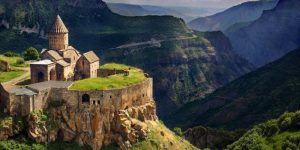
Tatev University was the largest center of medieval Armenian philosophy and science. Students studied philosophy, theology, physics, mathematics, astronomy, medicine, and architecture, and the library contained 10,000 manuscripts, all of which were destroyed in one day during the Mongol invasion in the thirteenth century. European scholars were jealous of the freedoms that Armenian scholars enjoyed, as they were able to study with relatively little interference from the Church.
